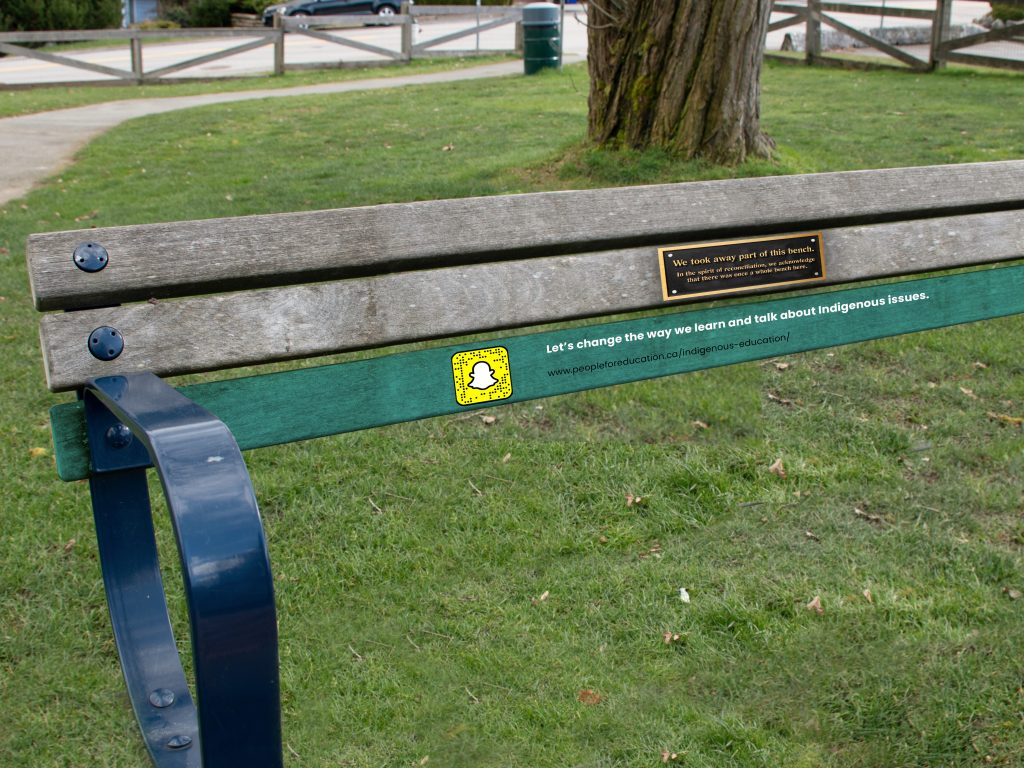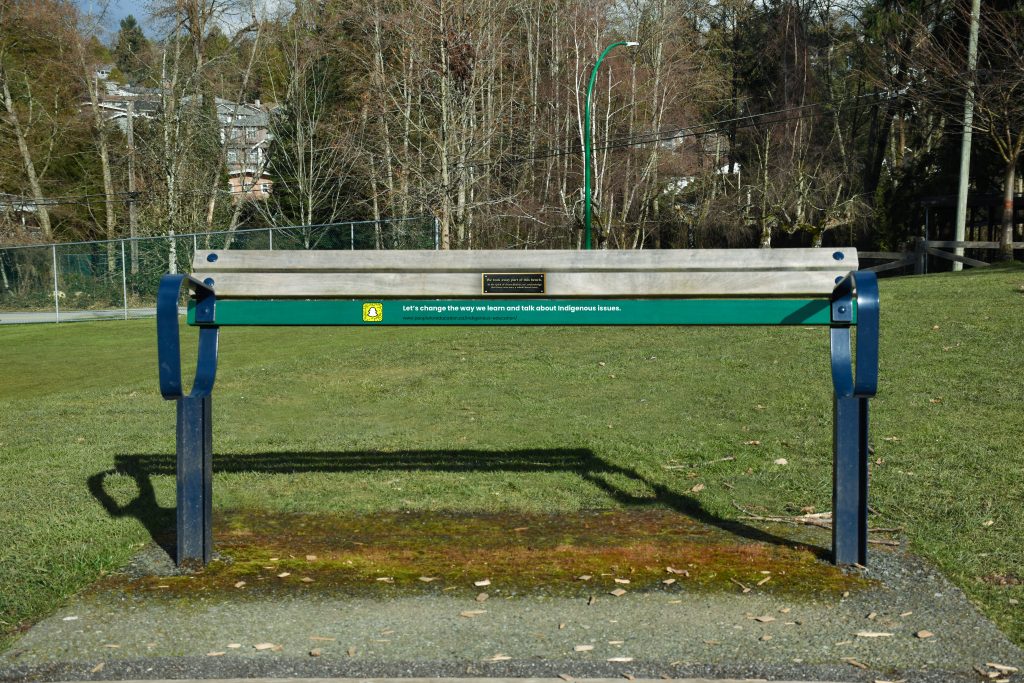My partner (Amanda) and I started this project with many ideas. We knew we wanted our target demographic to be students since we could relate to them the most and hoped we could resonate with them. We started a mindmap which led us to consider many possible topics that we could do.
One of which was land acknowledgments. I remember seeing this Facebook post years ago and I have been thinking about it since, so I thought that it would be interesting to do a campaign inspired by it.
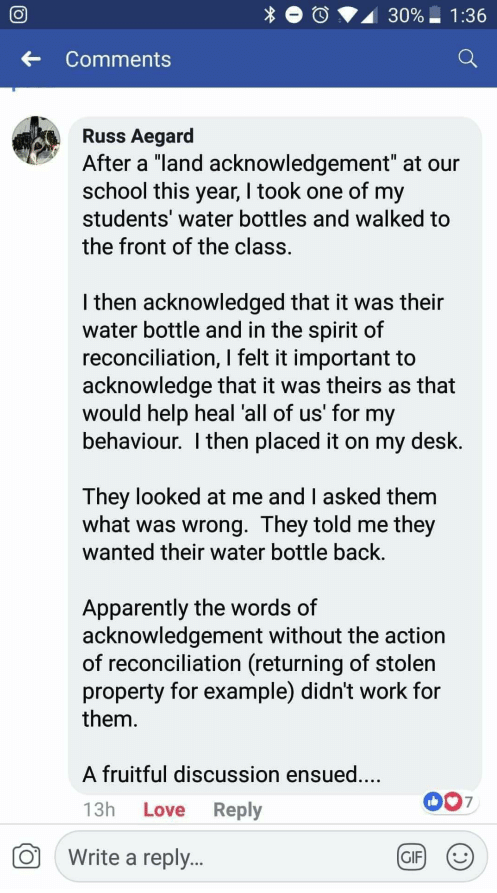
We pinned down a call to action that would fit our topic and chose #62. We felt that if we called for a more inclusive and non-colonized education about Indigenous people, their land and culture, more people would see why land acknowledgments don’t do much and instead put their energy into advocating for things like returning Indigenous land or giving compensation. Perhaps taxing non-Indigenous people and organizations who own Indigenous lands and putting that money back into Indigenous communities- there are many options to consider!
We chose to do a guerilla campaign as well as incorporating an interactive element. The general premise of our idea was to alter something to make it unusable and frustrate those who cannot use it to allude to how Indigenous people felt about the slow progress when it came to returning land or fulfilling the 94 Calls to Action.
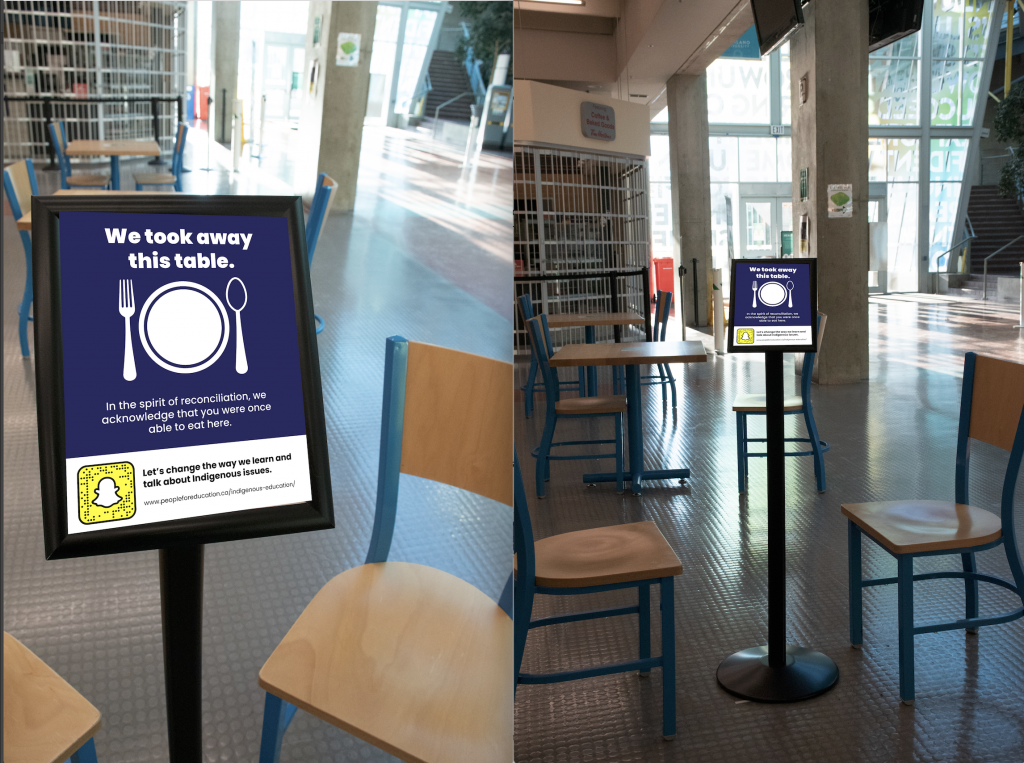
To do this, I made the signs that would have the message and call to action while Amanda went out to campus to take pictures of the signs on things around the school like vending machines and tables. She would then go home to edit out parts of the pictures. Due to lighting issues and other unforeseen circumstances, we had to photoshop the signs to make them more visible in the images, which took a while.
All three guerilla displays have a similar message, so I’ll talk about one. For the bench, we photoshopped the seat out. The bench plaque, which looks normal from far has a message that says it simply acknowledges the fact that this bench was once usable, but is simply not anymore, with no other statement on when it would be repaired or simply kept like that forever, which would prove to be inconvenient and even upsetting for people who used that bench previously. The call to action, which is below the plaque, mentions Indigenous issues, to which the reader might then realize that this display is an analogy for that.
On the bench and the other guerilla ads, we included a Snapcode for people to scan using Snapchat. We discovered that our target demographic, students, likely already have Snapchat downloaded on their phones since it is one of the most used apps by students. Snapchat has a scanning function that we decided to utilize to give information in a quick and digestible way.
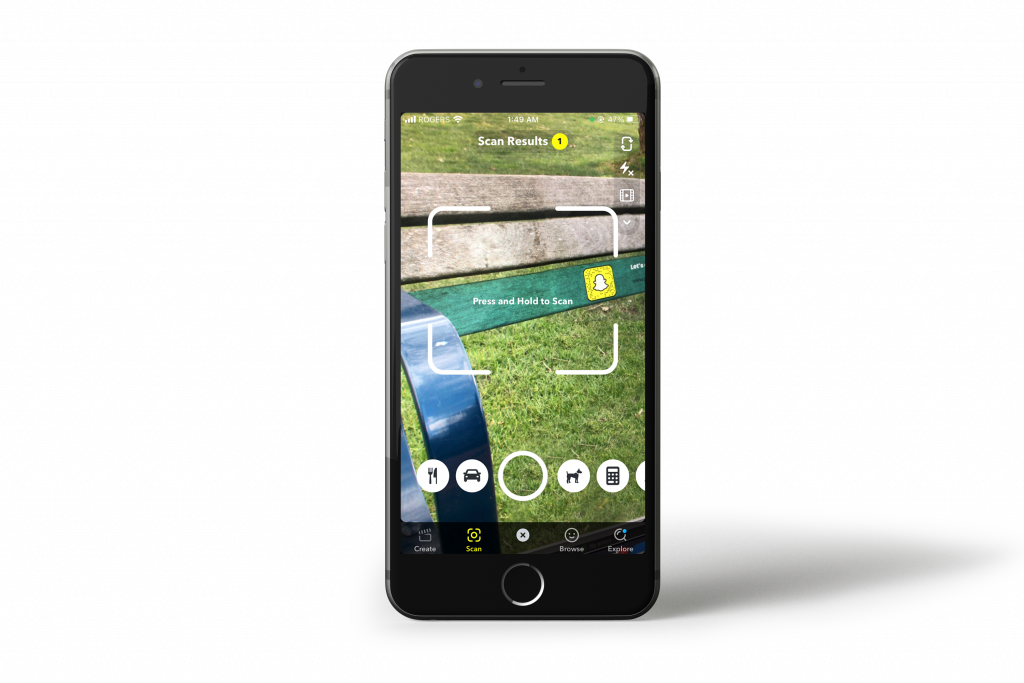
I am proud of what we have done. We had a clear idea and executed it to the best of our abilities. If we had more resources to do this campaign again we would find a way to control the environment we worked in so that we would not run into any lighting issues.

